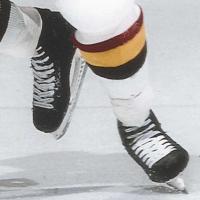Slate
Blackcurrant
Watermelon
Strawberry
Orange
Banana
Apple
Emerald
Chocolate
Marble
Slate
Blackcurrant
Watermelon
Strawberry
Orange
Banana
Apple
Emerald
Chocolate
Marble
-
Content Count
2804 -
Joined
-
Last visited
-
Days Won
93 -
Feedback
0%
Content Type
Profiles
Forums
Downloads
Gallery
Store
MSH News and Articles
Everything posted by flip12
-
Sorry to hear you got a bummer stick at the end of your wait. If I were you, I would complain. It's not reasonable to wait as long as you did. That on its own. On top of that to have a product that doesn't match the spec or live up to reasonable expectations (if they weren't going to paint it the way it looks like it does on their relaunched website, they should have given a heads up) is just the sandy sprinkles on a shit cake. You're doing them a favor saying something. As you said, they won't stay in business long if they alienate their previously loyal customers that want to give them the benefit of the doubt. You shouldn't be out a decent amount of cash, or any amount for that matter, for a product that's honestly way below what it should be.
-
It's more like Supreme and Supreme extra stiff. Catalyst is supposed to be an agility skate, but it doesn't have the traditional agility flex profile, it's just a little less stiff than their stiffer offerings.
-
Round 2.
-
You’ve got good taste. The Wild Berry Viper scheme is awesome, some of my favorite hockey unis ever. Your Innovative stash is incredible. 1100 is one of the sharpest looking sticks ever. Black with white and gold always wins when it comes to sticks.
-
The guy at the LHS said it’s also supposed to improve scan precision. I tried the current scanner for the first time and I found its suggestion to be at least a full size too big.
-
No actually. I've looked a few times out of curiosity. The easiest solution seemed to be trying to make it with a 3D printer and the right kind of plastic or going to a cobbler to see if they could work it out.
-
Just noticed Doughty's got 55-Flex lace extenders. Is this his way of dealing with the switch from (semi-)soft shell to hard shell Vapors? He now contends with Jagr for the all-time Frankenskate.
-
Gotcha. I thought that's what you meant, but just wanted to be sure. His pro pattern looks amazing. I know @decoy is a huge fan of it.
-
What do you mean by “the real Sakic?”
-
All skates for the last few decades have been made with thermoformable materials. You can see it happen in the how-it’s-made factory videos even with traditional skates like Graf and Bauer Classic Supremes. Whether they’re reformable under conditions available to the consumer is the question.
-
Vapor 8 was where I gave up on Bauer. I saw Graf 705s in person in a shop and I was blown away by the craftsmanship. They were much more comfortable too, of course. But these are making me reassess all I thought about Bauer. My Vapor 8s were size 10.5 and I didn't have a clue about what they should have been. These are 9.5 EE and they feel almost perfect. I had a hot spot at the end of my large metatarsal on one foot--rubbing right at the edge of the toe cap. But the shell has great stiffness and the liner/foam combo felt very similar to my Catalyst 7s. The steel feels great. Speaking of the forefoot vice, even though these are wide, they still look quite narrow. I fully agree about the looks. I thought Vapor 8s were so cool when they came out. Vapor 10s were just a cut above. The only ones I like almost as much are the XXX and Hyperlite. A true Vapor has to have a certain balance of black and grey. These though, they almost sparkle with the metal mesh, and it's nice there's no tertiary color muddling the mix. Even the splash of red in the XXX is a drawback in my book.
-
True has their own production facilities in China, if I’m not mistaken, so they’re offshoring it not outsourcing it.
-
Don’t assume. You’d do us all a huge favor if you tried them again and did a review. You know current offerings better than anyone as well as what Grafs were like compared to the competition in Graf’s glory days. That’s more or less what Graf tried, and when that wasn’t working they started to make their skate patterns more along the lines of other manufacturers. That hasn’t helped either. Graf wasn’t really on anything equivalent to the 3 Fit system. Sure they had different fits, but those fits were paired with different models, each with their own features. If you liked the 703 construction but had a deep foot, you were out of luck. Grafs are still the best skates I’ve ever skated in. Cobras (in their classic 11’ rocker config.) are still by far the holder and steel spec. combo that suit me best. I really wish they would make a comeback. I just don’t see the signs of it.
-

Hyperlite skates… live up to the hype?
flip12 replied to pucks_putts's topic in Ice Hockey Equipment
What makes you say talent is "mostly a myth?" I consider it one of the "huge amounts of luck" factors. -
They really ought to find a way to channel the success of the 703 into modern tech. They don't need to radically alter any of the major function points, just upgrade the construction. That's proven tricky over the last few decades, however.
-
The thing with Trues is, you don't have to bake them snug around the ankle. You can flare the top out if that's what you're after. The customizability of the boots can make them tricky to dial in.
-
There are quite a few who do. My personal standard is Graf. They nailed so many details it’s insane. Those have slowly been adopted by other brands, though, eliminating their comfort advantage, which was their calling card during their North American expansion in the 90’s and 00’s. Before the one90 dropped Graf had 25% of NHL All-Stars in their skates. They were a niche brand but that was huge for their visibility.
-
Watched it. It was a weird video. Was it an infomercial? Chris and his crew were nowhere visible in it at all. Also a bit random with the Special Mr. Graf 82 Edition skates. Why 82? 80 makes more sense to celebrate. Impressive they made the Cobra in a year. I know it has a lot in common with Tuuk Custom+, but it also has some nice improvements in comparison. Maybe that's not that surprising since they knew figure skating so well at the time.
-
I don’t doubt it, just never heard it.
-
@Leif What's a powerpull?
-
I asked because even first generation Catalysts are selling for around 50% off and they’re newer than the TF line.
-
Are you talking about the TF series?
-
From what I’ve seen, most boots run the quarter material all the way to the end of the facing. It makes sense because that area experiences a lot of force, so it’s usually reinforced with some pleather and the grommets to ensure some longevity. How thick the shell materials are through the facing, I’m not sure. If they stopped the quarter material and stiched pleather to that borderline all along the edge to make a kind of facing extension it would probably be a weak connection and prone to failure.
-
I like the look of the pants. The new Catalyst tendon guard looks like a step in the right direction. The Catalyst tongue and cosmetics remind me of CCM, especially the silver heel spur from the 70K-80K vintage.

